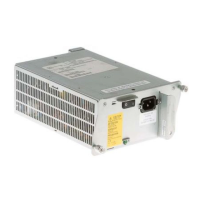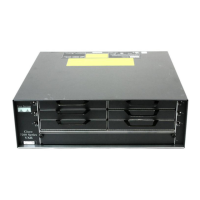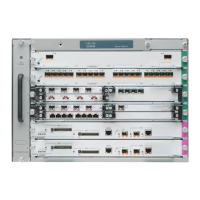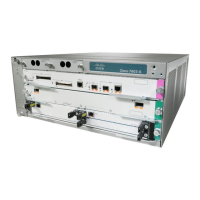1-69
Cisco uBR7200 Series Universal Broadband Router Software Configuration Guide
OL-2239-05
Chapter 1 Overview of Cisco uBR7200 Series Software
Supported Software Features for the Cisco uBR7200 Series
DRP Server Agent
The Director Response Protocol (DRP) is a simple User Datagram Protocol (UDP)-based application
developed by Cisco Systems. It enables Cisco's DistributedDirector product to query routers (DRP
Server Agents) in the field for Border Gateway Protocol (BGP) and Interior Gateway Protocol (IGP)
routing table metrics between distributed servers and clients. DistributedDirector, a separate standalone
product, uses DRP to transparently redirect end-user service requests to the topologically closest
responsive server. DRP enables DistributedDirector to provide dynamic, scalable, and “network
intelligent” Internet traffic load distribution between multiple geographically dispersed servers.
DRP Server Agents are border routers (or peers to border routers) that support the geographically
distributed servers for which DistributedDirector service distribution is desired. Note that, because
DistributedDirector makes decisions based on BGP and IGP information, all DRP Server Agents must
have access to full BGP and IGP routing tables. For configuration information, refer to the section titled
“Configuring a DRP Server Agent” in the Cisco IOS IP Configuration Guide, Release 12.2.
DSX Messages and Synchronized PHS Information
Cisco IOS Release 12.3(17a)BC introduces support for PHS rules in a High Availability environment.
In this release, and later releases, PHS rules synchronize and are supported during a switchover event of
these types:
• Route Processor Redundancy Plus (RPR+), with Active and Standby Performance Routing Engines
(PREs)
• HCCP N+1 Redundancy, with Working and Protect cable interface line cards
For additional information about these enhancements, and related High Availability features, refer to the
following documents on Cisco.com:
• N+1 Redundancy for the Cisco Cable Modem Termination System
http://www.cisco.com/en/US/docs/cable/cmts/feature/guide/uFGnpls1.html
• Route Processor Redundancy Plus for the Cisco uBR10012 Router
http://www.cisco.com/en/US/products/hw/cable/ps2209/products_feature_guide09186a00801a24e
0.html
Globally Configured HCCP 4+1 Redundancy on the Cisco uBR7246VXR Router
Cisco IOS Release 12.3(17a)BC introduces support for HCCP 4+1 Redundancy on the
Cisco
uBR7246VXR router. Global configuration makes this High Availability feature quick to
implement in the HCCP redundancy scheme.
In this High Availability configuration, four Working router chassis are supported with one Protect router
chassis. These five routers are further cabled and configured with two Cisco RF Switches in the same
rack using the Cisco Hot Standby Connection to Connection (HCCP) protocol.
HCCP 4+1 Redundancy is a global configuration for all the Cisco uBR7246VXR routers in the scheme.
HCCP 4+1 Redundancy supports the Cisco uBR-MC28U broadband processing engine (BPE),
configured in inter-chassis protection, where the Working and Protect cable interface line cards or BPEs
are operating in different router chassis. A switchover event applies to an entire cable interface line card.
Note 4+1 Redundancy on the Cisco uBR7246VXR router requires that all BPEs in the router be the same.
For additional information about HCCP 4+1 Redundancy, refer to the following document on
Cisco.com:
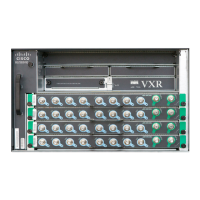
